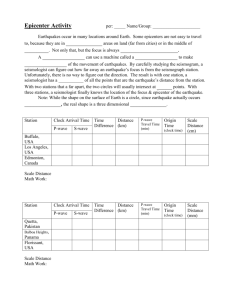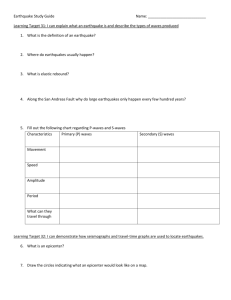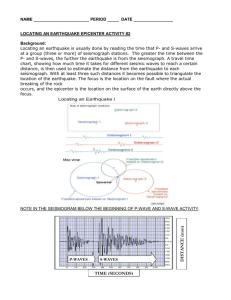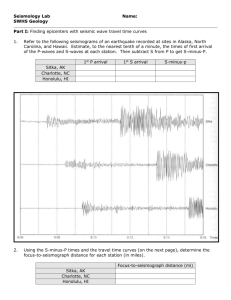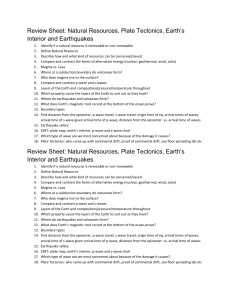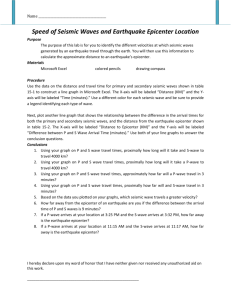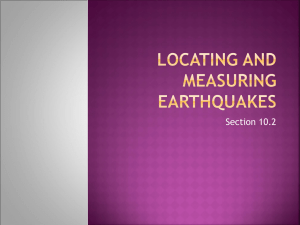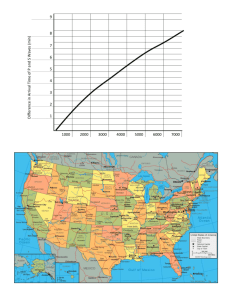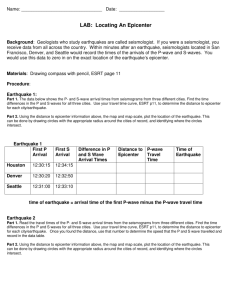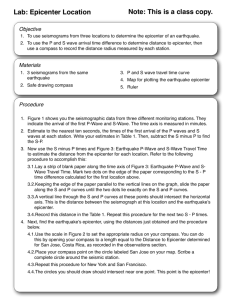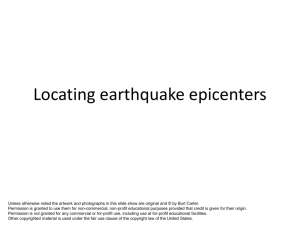Locating an Earthquake
advertisement
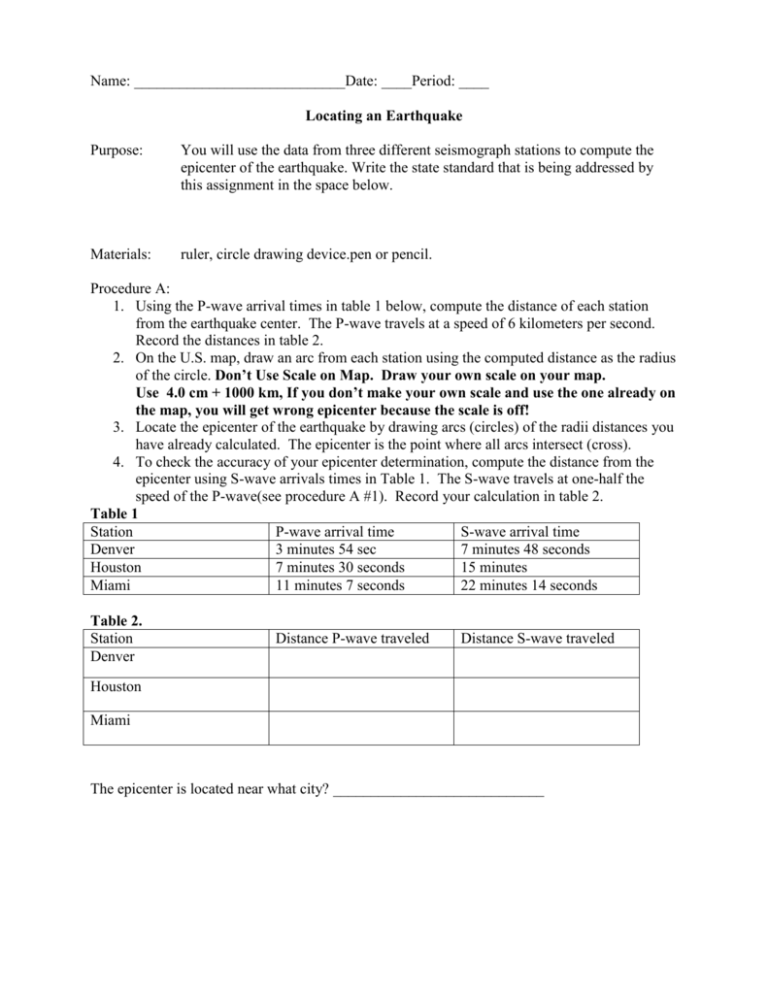
Name: ____________________________Date: ____Period: ____ Locating an Earthquake Purpose: You will use the data from three different seismograph stations to compute the epicenter of the earthquake. Write the state standard that is being addressed by this assignment in the space below. Materials: ruler, circle drawing device.pen or pencil. Procedure A: 1. Using the P-wave arrival times in table 1 below, compute the distance of each station from the earthquake center. The P-wave travels at a speed of 6 kilometers per second. Record the distances in table 2. 2. On the U.S. map, draw an arc from each station using the computed distance as the radius of the circle. Don’t Use Scale on Map. Draw your own scale on your map. Use 4.0 cm + 1000 km, If you don’t make your own scale and use the one already on the map, you will get wrong epicenter because the scale is off! 3. Locate the epicenter of the earthquake by drawing arcs (circles) of the radii distances you have already calculated. The epicenter is the point where all arcs intersect (cross). 4. To check the accuracy of your epicenter determination, compute the distance from the epicenter using S-wave arrivals times in Table 1. The S-wave travels at one-half the speed of the P-wave(see procedure A #1). Record your calculation in table 2. Table 1 Station P-wave arrival time S-wave arrival time Denver 3 minutes 54 sec 7 minutes 48 seconds Houston 7 minutes 30 seconds 15 minutes Miami 11 minutes 7 seconds 22 minutes 14 seconds Table 2. Station Denver Distance P-wave traveled Distance S-wave traveled Houston Miami The epicenter is located near what city? ____________________________ Page 2 Procedure B: page 3 Using the earthquake arrival times for many earthquakes, scientists have plotted travel-time curves. Travel-time curves are line graphs that show how long it takes for a type of earthquake wave to travel a certain distance. Use the travel-time curve to answer the following questions. 1. If a seismograph were located 1600 kilometers from the earthquake’s focus, how long would it take the P-wave to travel this distance? 2. How long would it take the S-wave to travel 1600 kilometers? 3. How long would it be after the seismograph recorded the arrival of the P-wave before the seismograph recorded the arrival of the S-wave? 4. An earthquake was recorded at three different stations: ( see data on the next page, page 4) A, B, and C. Use the travel-time curve (on page 3) to determine the distance from each station to the earthquake epicenter. Fill in the distance box on the top of page 4 Use the 3 seismographs above to answer numbers 5 and 6 below 5. Estimate to the nearest half-minute the arrival times of the P and S-waves at each station. Time of P-wave arrival Time of S-wave arrival Station A ____________________ ___________________ Station B ____________________ ___________________ Station C ____________________ ___________________ 6. Which station is closet to the epicenter? _________________________________ Which station is the farthest from the epicenter? ___________________________


